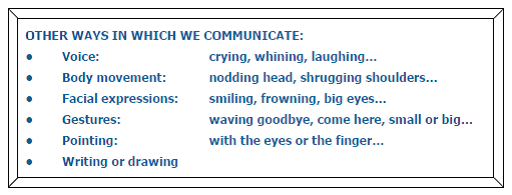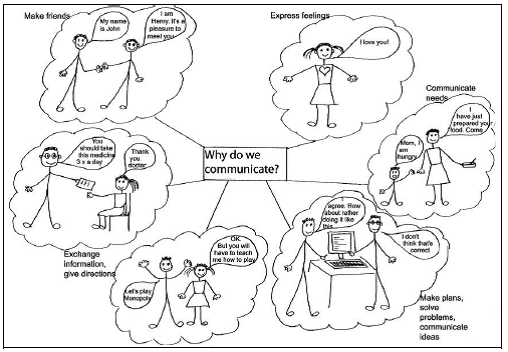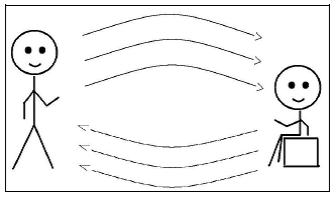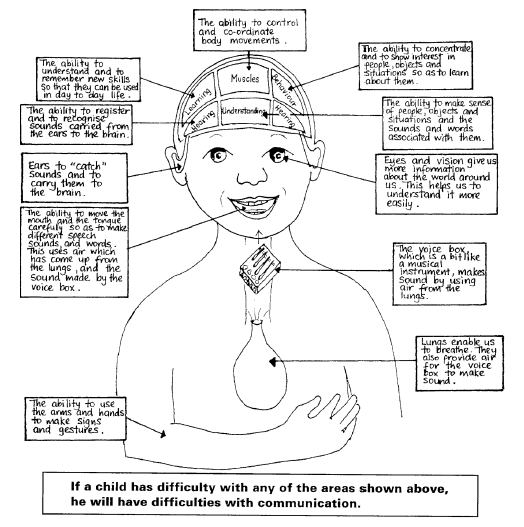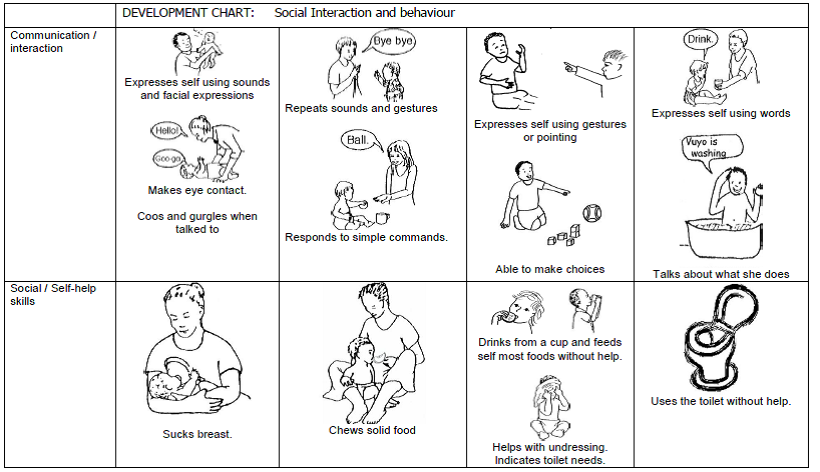Module 4: Communication
Page Outcomes[edit | edit source]
When you have finished this workshop, you should understand and be able to explain to someone else:
- What communication is
- Why it is so important
- What you can do to help a child communicate
Communication[edit | edit source]
There are many forms of communication other that speaking:
Now lets take a further look at how we communicate with each oher.
Here are some important reasons for communicating:
- Establish relationships and make friends.
- Exchange information, communicate ideas and give directions.
- Communicate needs and wishes.
- Develop thinking skills e.g. help us to remember, make plans, solve problems.
- Become happy and successful members of our community.
If you try to talk to someone with your mouth full of food, or while holding your tongue in your cheek, the other person will find it difficult to understand you. And it will also be difficult for you to make yourself understood. Or to express yourself.
Here then is our definition of communication:
This forms a cycle of communication:
In a child with cerebral palsy, this cycle often breaks down.
Why would a child with cerebral palsy may have difficulty communicating?
The following diagram shows that many parts of the brain are needed to be able to communicate without difficulty. This includes those parts of the brain controlling body movements, those interpreting information from the senses, and parts used in thinking, remembering and
understanding. Keep in mind that children with cerebral palsy may have difficulties with some or many of these. The more areas that a child has difficulties with, the more severe the communication problem will be.
To understand a message you need:
- Ears and/eyes to see and hear the message
- The part of your brain that makes sense of what you have heard or seen (intellect)
To express yourself you need:
- The intellect to know how to express yourself
- Mouth and throat to work to make sounds and words out of the sounds (tongue and mouth)
- Control of your body parts to make expressions/ gestures
Let's look at where it breaks down.
A child who has cerebral palsy and who has an intellectual disability (that is, who is slow to learn):
- Will have difficulty with both steps -- understanding and expressing.
- How much difficulty depends on the extent and areas of damage in the brain.
A child who has cerebral palsy and has no intellectual disability:
- Will not have difficulty with understanding.
- If she can talk, she will be able to express herself, though it may be a bit unclear.
- If she cannot talk, it may be difficult for her to express herself and very often she is then labeled as having an intellectual disability.
- She will need to be taught and encouraged in other ways to express herself, otherwise her communication cycle breaks down.
Look again at the communication part of our development chart:
